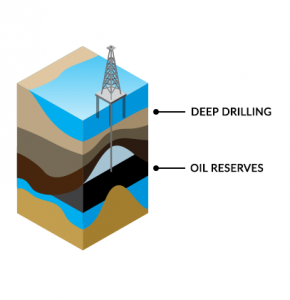All Categories
Featured
Table of Contents
Importance Of Geophysical Surveys — Methods And Uses in Carramar Western Australia 2021

The main model for the radial structure of the interior of the Earth is the preliminary referral Earth design (PREM). Some parts of this model have been updated by recent findings in mineral physics (see post-perovskite) and supplemented by seismic tomography. The mantle is generally composed of silicates, and the borders in between layers of the mantle are consistent with stage transitions.

Schematic of Earth's magnetosphere. Flows from left to.
Inside the magnetosphere, there are reasonably thick areas of solar wind particles called the Van Allen radiation belts. Geophysical measurements are usually at a particular time and place. Precise measurements of position, along with earth contortion and gravity, are the province of geodesy. While geodesy and geophysics are different fields, the two are so closely connected that many clinical companies such as the American Geophysical Union, the Canadian Geophysical Union and the International Union of Geodesy and Geophysics include both.
Geophysicist Bob Embley: Ocean Exploration Careers in Wattleup Oz 2022
, integrates huge coordinates and the local gravity vector to get geodetic collaborates. This method just supplies the position in 2 coordinates and is more difficult to use than GPS.
Relative positions of 2 or more points can be determined using very-long-baseline interferometry. Gravity measurements became part of geodesy due to the fact that they were needed to associated measurements at the surface area of the Earth to the referral coordinate system. Gravity measurements on land can be made using gravimeters deployed either on the surface or in helicopter flyovers.
Satellites in area have actually made it possible to collect data from not just the noticeable light area, but in other areas of the electro-magnetic spectrum. The worlds can be defined by their force fields: gravity and their electromagnetic fields, which are studied through geophysics and space physics. Measuring the changes in velocity experienced by spacecraft as they orbit has actually enabled fine information of the gravity fields of the worlds to be mapped.
Working As A Geophysicist And Oceanographer In Canada in Kensington Aus 2021

Given that geophysics is worried about the shape of the Earth, and by extension the mapping of features around and in the world, geophysical measurements include high precision GPS measurements. These measurements are processed to increase their accuracy through differential GPS processing. When the geophysical measurements have been processed and inverted, the translated results are plotted using GIS.
Lots of geophysics companies have actually developed in-house geophysics programs that pre-date Arc, GIS and Geo, Soft in order to satisfy the visualization requirements of a geophysical dataset. Expedition geophysics is used geophysics that typically uses remote noticing platforms such as; satellites, aircraft, ships, boats, rovers, drones, borehole sensing equipment, and seismic receivers.
For example, aeromagnetic information (airplane collected magnetic information) gathered using standard fixed-wing aircraft platforms need to be remedied for electromagnetic eddy currents that are developed as the aircraft moves through Earth's magnetic field. There are also corrections associated with changes in determined prospective field intensity as the Earth rotates, as the Earth orbits the Sun, and as the moon orbits the Earth.
Geophysicist Careers in Noranda Oz 2022
Signal processing includes the correction of time-series data for undesirable noise or mistakes introduced by the measurement platform, such as aircraft vibrations in gravity information. It also involves the reduction of sources of sound, such as diurnal corrections in magnetic information. In seismic information, electro-magnetic data, and gravity data, processing continues after mistake corrections to consist of computational geophysics which lead to the final analysis of the geophysical information into a geological interpretation of the geophysical measurements Geophysics became a separate discipline only in the 19th century, from the crossway of physical location, geology, astronomy, meteorology, and physics.
The magnetic compass existed in China back as far as the 4th century BC. It was used as much for feng shui when it comes to navigation on land. It was not till excellent steel needles might be created that compasses were used for navigation at sea; prior to that, they might not keep their magnetism long enough to be helpful.
By looking at which of 8 toads had the ball, one might figure out the direction of the earthquake.'s (1600 ), a report of a series of meticulous experiments in magnetism.
Geophysicist Jobs in Coolbinia Western Australia 2023
In 1687 Isaac Newton published his, which not only laid the foundations for classical mechanics and gravitation however also described a range of geophysical phenomena such as the tides and the precession of the equinox. The very first seismometer, an instrument capable of keeping a constant record of seismic activity, was built by James Forbes in 1844. Geochemistry, Geophysics, Geosystems. National Aeronautics and Area Administration. Obtained 13 November 2018.
Runcorn, S.K, (editor-in-chief), 1967, International dictionary of geophysics:. Pergamon, Oxford, 2 volumes, 1,728 pp., 730 fig Geophysics, 1970, Encyclopaedia Britannica, Vol. Introduction to seismology (Second ed.).
Latest Posts
Geophysical Surveys Definition & Meaning In Stock ... in Murdoch Oz 2023
About Environmental Geophysics in Middle Swan Aus 2022
Geophysicist Job Description in Australia 2021